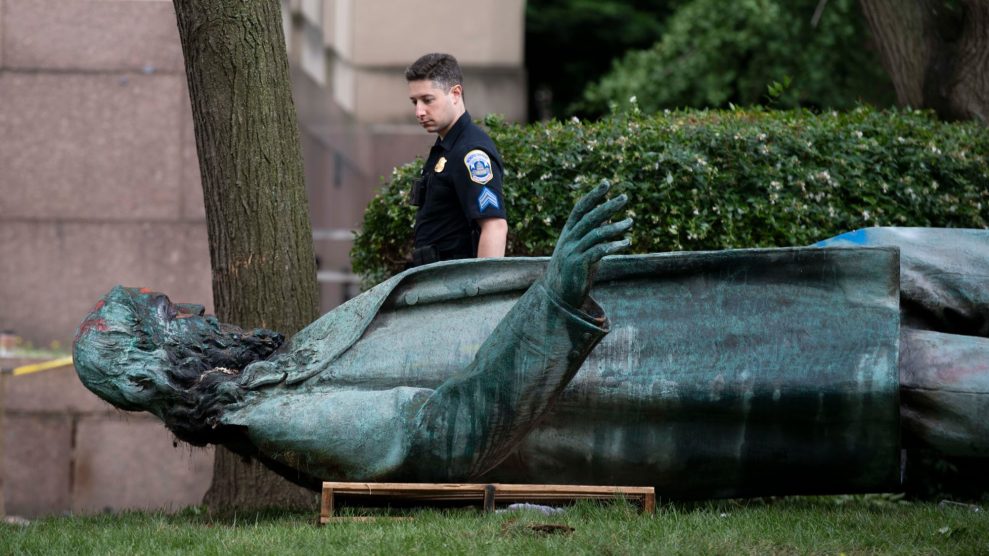The National Park Service (NPS) announced plans to restore and reinstall the statue of Confederate General Albert Pike in Washington, D.C. This decision follows the statue’s removal during protests in June 2020 that were ignited by the murder of George Floyd by Minneapolis police. The NPS stated that the statue, which has been in storage since its removal, is undergoing restorations and is expected to be reinstalled by October 2023.
The statue, originally authorized by Congress in 1898, was located in Judiciary Square and was intended to honor Pike’s leadership within Freemasonry. However, the NPS did not highlight that Pike was also a general for the Confederate States of America, known for his efforts to uphold slavery. He has been linked to the Ku Klux Klan and commanded Native American troops during a conflict in which they scalped Union soldiers.
In a statement at the time of the statue’s removal, Donald Trump described the act as “a disgrace to our Country!” This incident was part of a broader movement in which nearly 100 Confederate monuments were taken down across the United States in 2020, according to a report by the Southern Poverty Law Center (SPLC). As of 2023, the SPLC noted that over 680 Confederate monuments remain standing nationwide.
The NPS cited two of Trump’s executive orders—“Making the District of Columbia Safe and Beautiful” and “Restoring Truth and Sanity to American History”—to justify the statue’s reinstatement. NPS representatives did not provide details regarding the cost of the restoration or respond to inquiries about Pike’s historical role.
Eleanor Holmes Norton, D.C.’s non-voting Democratic delegate to Congress, expressed her opposition to the decision, stating that she plans to reintroduce legislation to permanently remove the statue. “The decision to honor Albert Pike by reinstalling his statue is as odd and indefensible as it is morally objectionable,” she stated. “A statue honoring a racist and a traitor has no place on the streets of D.C.”
The restoration of the Pike statue reflects a broader political agenda under the Trump administration. Since resuming office, Trump has made efforts to reshape American history, downplaying historical divisions and celebrating figures associated with oppression. He has criticized institutions like the Smithsonian for what he regards as a divisive, race-centered ideology and has taken steps to remove references to controversial topics from educational materials.
In addition to the Pike statue, Trump’s administration has reinstated names of several military bases that honored Confederate leaders and sought to alter the narrative in public spaces to align with a more favorable view of American history. Legislation introduced by congressional allies has aimed to rename various D.C. landmarks in Trump’s honor.
As discussions about race, history, and representation continue to evolve in American society, the decision to reinstall the Pike statue will likely be met with considerable debate and opposition. The implications of this action extend beyond a single monument, touching on broader themes of how history is remembered and honored in public spaces across the country.
